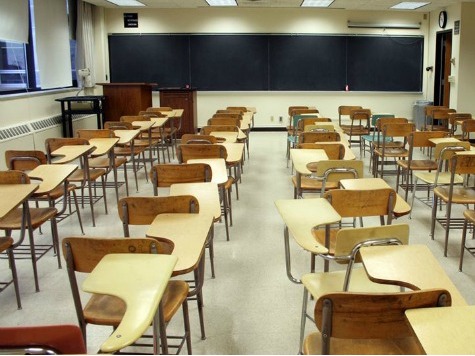Even in light of the firestormthat brought down metadata giant inBloom,data tracking of children is still here. Nationwide,states are required by law to collect and store student data as part of theprime directive to move students down the college and career readiness conveyorbelt. Texas is no exception.
In fact, the Texas Tribune has a newappto go along with their recent online data collection venture to warehousestudent data collected from the Texas HigherEducation Coordinating Board and the TexasEducation Agency (TEA) on higher education outcomes. This includes students that started 8th grade in a Texas public school during the six academicyears between 1996 to 2001. It also trackedto over 11 years after the 8th grade to determine the percentage of middleschool students who went off to college within six years of high school graduation. Those kids are now “well into their20s,” according to the Tribune.
Texas is tracking your children,anonymously, of course, through “cohort tracking.” Since 2012, the Houston Endowment, the philanthropicorganization and Tribune app sponsor, has advocated for its use. Last year, they partnered with the TexasTribune to bring these statistics to life.
Cohorttracking is actually a type of database tool. The National Center for Education Statistics (NCES), used it on its Early Childhood Longitudinal StudyBirth Cohort (ECLS-B) study that, in fact, was designed as a nationwide diagnostic to “provide policy makers, researchers, child care providers,teachers, and parents with detailed information about children’s early lifeexperiences.”
Datacollected for the ECLS-B focused on a national sampling of 14,000 children bornin 2001 to a variety of socioeconomic, racial or ethnic backgrounds. It tracked their lives from birth to whenthey entered kindergarten and zeroed in on the children’s health, development,care, and education. Personal data pointsincluded cognitive, social, emotional and physical development. NCES also tracked the lives of the 0-5 set athome and in child care/school settings. No stone was left unturned. They also included babies born with very low birth weight, according tothe study.
“Cohorttracking is something the Texas Education Coordinating Board has been doing forsome time — but quietly,” the Tribune article stated. However, the Houston Endowment approached theTEA and news organization about a redo with an annual snapshot of the educationsystem, for public consumption.
TheTexas cohort focused on 8th graders who went onto private or public two andfour year colleges in Texas; it also included kids who did not graduate andinstead took the GED, the high school equivalency test. Datawas also factored in for high school students who received dual college credit.Students who moved out of state were deemed lost until they moved back in toattend college and could be retracked. However, students who attended universitiesout-of-state were omitted from the study. Military service and apprenticeship programs were not accounted foreither. Where ever there wasn’t enoughof a population to protect a student’s identity, that data was either masked, aggregated or simply not presented, accordingto the Tribune.
GeorgeGrainger, senior program officer for the Houston Endowment’s educationinitiative told the Texas Tribune that the omissions could be corrected.
However,that might require the National Student Clearinghouse, the nation’s official education verification and student outcomes research tracker. Grainger pointed out that Texas doesn’t currently pay for this access.
Today, the Texas outcome tracker onlybreaks the state down into regions and counties in which demographics trackedincluded percentage of college graduates, ethnicity, gender, and economicstatus.
In the Tribune article Grainger sharedthat this data made the rounds. It’s been presented on statewide and regional levels based on Texas’ 20 Education Service Centers, Grainger claimed it was also shared nationally.
TheTEA Public EducationInformation Management System (PEIMS) tracks all student information requestedand received by TEA about public education, including student demographic andacademic performance, personnel, financial, and organizationalinformation.
In the midst of the Lone Star state’s tracking fever, the Washington Post article “Whya ‘Student Privacy Bill of Rights’ is Desperately Needed,” sheds a light on the glaring reality behind all this data-collection — the FamilyEducational Rights and Privacy Act (FERPA), which was relaxed in 2011, andthe Protectionof Pupil Rights Amendment (PPRA) are not protecting all information that isbeing collected regardless of whether it is used or not. Even with industry standards and vows toprotect the data, student privacy and information safety cannot be fullyguaranteed.
A lot of data is being collected on minors and the higher education outcomes app estimated that approximately 300,000 students begin 8th grade in a Texas public school each year.
Nationalemployment and earnings statistics suggest that these students will havebetter work prospects as adults if they finish high school and go onto a two or four year degree, or other certificated program, according to the Tribune.
The article also insisted it was increasingly more difficult to enter the workforce without that higher education degree and, of course, it would be in a world of data collection that’s predicatedon the 21 Century theme that everyone mustgo to college.

COMMENTS
Please let us know if you're having issues with commenting.